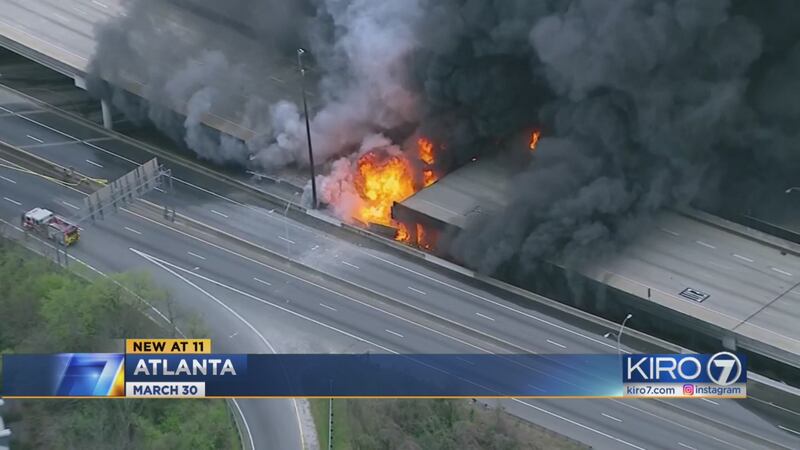SEATTLE — A fire that officials said was set intentionally under an Atlanta freeway Thursday has prompted Washington state transportation officials to take notes.
“Keep an eye on exactly what they’re doing. Lesson learned,” said WSDOT spokesperson Travis Phelps.
Phelps said the Seattle region would similarly suffer a traffic nightmare if a portion of I-5 were similarly shut down for months, a predicament Atlanta now faces. Phelps said Atlanta officials have been very forthcoming about exactly what challenges are ahead.
"There's not a street in town that's going to take up the capacity that I-85 could take up. We're in the same situation here. 405, 99, I-5, one of those is out of commission; we don't have a city street that could take that up," he said.
On Feb. 27, a tanker carrying liquid propane rolled over on I-5 south of downtown Seattle, bringing the city to a standstill for about eight hours.
Phelps said it is unlikely for a fire alone to bring down a section of concrete and steel. So the material that burned in Atlanta had to be burning at a very high temperature.
Officials in Atlanta told reporters Friday that the state had stored high-density polyethylene pipes under the section that burned. Three people have now been arrested, accused of intentionally setting the fire.
Phelps said WSDOT also stores materials and equipment under Washington freeways, but they keep hazardous materials away from those areas.
He said that our freeways are still susceptible to major damage in an earthquake, or an accident.
In 2002, a rail car carrying alcohol caught fire in Puyallup. That fire burned at 2,200 degrees.
“Wrecked, crashed, ignited, underneath one of our structures in the Tacoma area. Burned for about 45 minutes. Once it was done, our bridge was still standing,” Phelps said.
Still, that section was replaced later on. Typically, structural engineers make a thorough inspection after any fire, earthquake or accident, to make sure the bridge is still safe to use. Freeway sections are otherwise inspected every two years.
However, parts of I-5 are sometimes examined far more frequently, because the freeway is more than 60 years old.
“[I-5] really hasn’t been rehabbed or completely redone since it was built in the '60s. It’s reached the end of its useful life,” Phelps said.
I-5 will likely need major work done in the near future.
Cox Media Group








